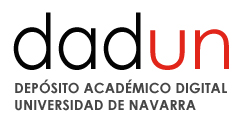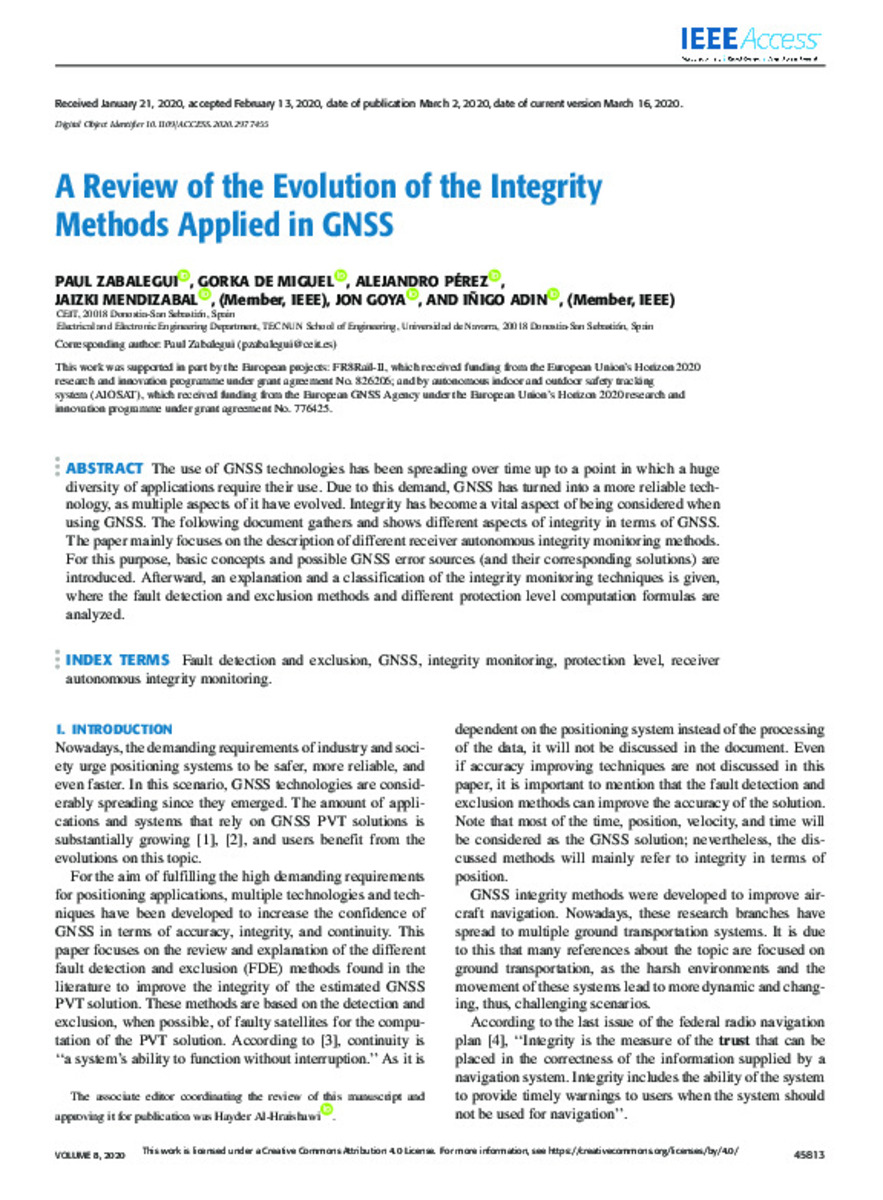Full metadata record
| DC Field | Value | Language |
|---|---|---|
| dc.creator | Zabalegui-Landa, P. (Paul) | - |
| dc.creator | de-Miguel, G. (Gorka) | - |
| dc.creator | Pérez, A. (Alejandro) | - |
| dc.creator | Mendizabal-Samper, J. (Jaizki) | - |
| dc.creator | Goya Odriozola, J. (Jon) | - |
| dc.creator | Adin-Marcos, I.(Iñigo) | - |
| dc.date.accessioned | 2023-05-13T09:29:05Z | - |
| dc.date.available | 2023-05-13T09:29:05Z | - |
| dc.date.issued | 2020 | - |
| dc.identifier.citation | Zabalegui-Landa, P. (Paul); de-Miguel, G. (Gorka); Pérez, A. (Alejandro); et al. "A review of the evolution of the integrity methods applied in GNSS". IEEE Acces. 8, 2020, 45813 - 45824 | es |
| dc.identifier.issn | 2169-3536 | - |
| dc.identifier.uri | https://hdl.handle.net/10171/66214 | - |
| dc.description.abstract | The use of GNSS technologies has been spreading over time up to a point in which a huge diversity of applications require their use. Due to this demand, GNSS has turned into a more reliable technology, as multiple aspects of it have evolved. Integrity has become a vital aspect of being considered when using GNSS. The following document gathers and shows different aspects of integrity in terms of GNSS. The paper mainly focuses on the description of different receiver autonomous integrity monitoring methods. For this purpose, basic concepts and possible GNSS error sources (and their corresponding solutions) are introduced. Afterward, an explanation and a classification of the integrity monitoring techniques is given, where the fault detection and exclusion methods and different protection level computation formulas are analyzed. | es_ES |
| dc.description.sponsorship | This work was supported in part by the European projects: FR8Rail-II, which received funding from the European Union’s Horizon 2020 research and innovation programme under grant agreement No. 826206; and by autonomous indoor and outdoor safety tracking system (AIOSAT), which received funding from the European GNSS Agency under the European Union’s Horizon 2020 research and innovation programme under grant agreement No. 776425. | es_ES |
| dc.language.iso | eng | es_ES |
| dc.publisher | IEEE | es_ES |
| dc.relation | info:eu-repo/grantAgreement/EC/H2020/826206/EU | es_ES |
| dc.relation | info:eu-repo/grantAgreement/EC/H2020/776425/EU | es_ES |
| dc.rights | info:eu-repo/semantics/openAccess | es_ES |
| dc.subject | Fault detection and exclusion | es_ES |
| dc.subject | GNSS | es_ES |
| dc.subject | Integrity monitoring | es_ES |
| dc.subject | Protection level | es_ES |
| dc.subject | Receiver autonomous integrity monitoring | es_ES |
| dc.title | A review of the evolution of the integrity methods applied in GNSS | es_ES |
| dc.type | info:eu-repo/semantics/article | es_ES |
| dc.description.note | Under a Creative Commons License | es_ES |
| dc.identifier.doi | 10.1109/ACCESS.2020.2977455 | - |
| dadun.citation.endingPage | 45824 | es_ES |
| dadun.citation.publicationName | IEEE Acces | es_ES |
| dadun.citation.startingPage | 45813 | es_ES |
| dadun.citation.volume | 8 | es_ES |
Files in This Item:
Statistics and impact
Items in Dadun are protected by copyright, with all rights reserved, unless otherwise indicated.






